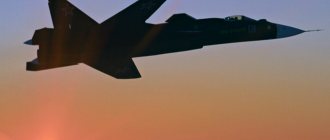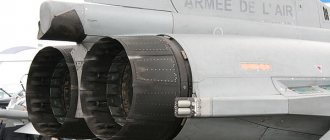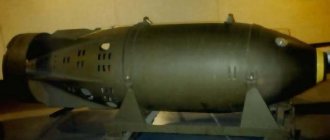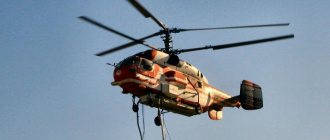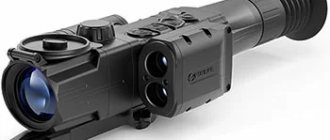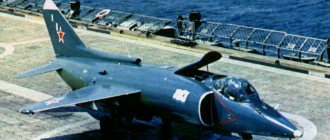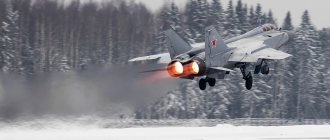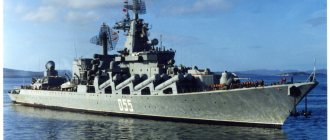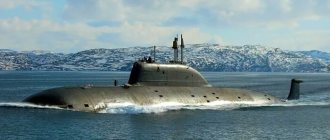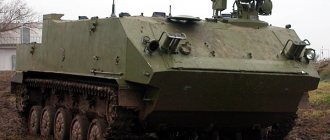What is happening!
Strange times have come. In the United States, the number of fifth-generation fighters will soon exceed five hundred. In China and Russia, the fifth generation is flying and is slowly entering service. Japan and even Iran have their own project (just don’t google it at night!). And only Europe is silent. Yes, in 2012 SAAB mentioned Flygsystem 2020, but since then there has been no word.
How is it that countries that recently claimed a place in the hall of fame of the best military aircraft manufacturers are already several years behind?
And now what i can do? It doesn't matter, though. Let's take a better look at the remnants of former luxury - fourth-generation projects created in Europe, and arrange a test purchase of these aircraft
Main materials that were used in the design
There are many materials used, and there are not so many traditional aviation aluminum alloys. Thus, more than 40% of the total weight of the airframe is carbon fiber. The number of lithium and aluminum alloys reaches 20%, pure aluminum alloys account for 18%. High-strength titanium-based materials account for 12%, and fiberglass accounts for 10%. The surface of the aircraft is covered by 70% carbon fiber, 12% is occupied by materials based on fiberglass.
Even during the initial planning of the aircraft design, the terms of reference included the condition that the weight of the empty aircraft should not exceed 9999 kilograms. In addition, the design allows for the possibility of using new alloys based on magnesium and aluminum in the design. The lifespan of the airframe is at least six thousand hours. Thus, the Typhoon fighter noticeably outperforms the American F-35, for which this figure ranges from 2-4 thousand hours.
First round: selection of specialists
France: Dassault-Rafale
Twin-engine light multi-role fighter, the main hope of the French in air combat. Having taken wing in 2001, within three years it began to enter service with the French military, displacing the previous development, the Dassault-Mirage 2000.
This aircraft cannot seriously boast and stand out from the ranks of its competitors. The thrust-to-weight ratio is not the greatest; there is no controlled thrust vector. There is an onboard radar station with an active phased array, but who would be surprised by this now? The only thing that compares favorably is the combat load, which amounts to a respectable 9,500 kilograms, which is more than not only its European, but also its American “colleagues.”
"Dassault Rafal"
The creators also actively advertise a large amount of carbon fiber (carbon fiber, in our opinion, backyard) in the aircraft design. However, boasting about this is somehow weak. I would like to talk about the aircraft carrier version that distinguishes it favorably, but even here there was a mistake. It turned out that fighter engines require maintenance every 150 hours of flight. Moreover, such work cannot be carried out in the conditions of an aircraft carrier - you need to return to the port. When this became clear, the sailors shouted loudly and gesticulated, the planes were rejected, and they decided to deal with the engines later.
Germany, Italy, Spain and Great Britain: Eurofighter Typhoon
Perhaps the main hope of Europe in the nineties, the Eurofighter Typhoon exploded into the sky in 1994, and until the start of operation in 2003 they talked about it with aspiration and tenderness. All the trends of recent years are here: even a decrease in radio visibility in order to play “almost stealth”. “Almost” - because there were no internal compartments for weapons; everything is attached from the outside, the old-fashioned way.
Fuel is poured not only into the fuselage, but also into the wings.
The fuel is located in the wing caissons. Partly thanks to this, it was possible to provide a combat radius of 1390 kilometers; however, with the same three drop tanks as the Rafal.
Eurofighter Typhoon (photo: David Ellins)
There is no deflectable thrust vector here, but in the future - if customers give money for development - it will be possible to get one. The engines are modular, as is now fashionable - replacement time is only about 45 minutes.
Sweden: SAAB JAS-39 "Gripen"
The Swedish sky opened its arms to the first “griffin” back in 1988. The operation of these aircraft began almost ten years later, in 1997. The Swedish military, drawing up the technical specifications for Saab engineers, put crosses in all possible columns: low radio signature, the ability to use the fighter as a reconnaissance and interceptor, short take-off, operation from unprepared airfields, cheapness and simplicity.
The engineers did not disappoint. Even though there is only one engine, the dimensions are small, and the combat load is almost half that of the Rafale, but the rest of the points have been fulfilled - receive it and sign for it.
SAAB JAS-39 "Gripen" (photo: Tuomo Salonen)
The plane is cheap, simple and boasts a cockpit that is surprisingly similar to the dashboard of a SAAB 9000 car (almost the same company). The Swede doesn’t show any special miracles, but he doesn’t get lost either. Separately, it is worth noting the good thrust-to-weight ratio.
Ratings:
Dassault Rafale - 4.5
Eurofighter Typhoon - 4.5
JAS 39 Gripen - 3.5
Distribution of means for production
A total of 620 vehicles of this type were planned to be produced. Since initially there were four states that expressed a desire to participate in the program, the aircraft were distributed among them, in accordance with the available production capacity.
Thus, UK factories pledged to assemble 232 Typhoons, Germany assembled 180 units, and Italy received 121 aircraft. The Spaniards, due to poor production conditions, were trusted to assemble only 87 fighters. The first aircraft began to arrive in 2003. Great Britain also received the first fighters of this model at the same time, some of which immediately went to form 17 Squadron. In it, aircraft were tested most thoroughly. Oddly enough, the aircraft officially entered the EU Air Force only on July 1, 2005. The first batch included 148 fighters, all of which are still in service.
Already in 2002, the Austrian government expressed interest in purchasing 18 units of equipment, immediately investing $2.55 billion in production. However, already in June 2007, due to the approaching crisis, the agreement was revised: according to the new conditions, the Austrians wanted to receive 15 aircraft, and in a more “sparse” configuration. To date, similar agreements have been concluded with the UAE and a number of other customers. It is reported that EU factories must supply 707 fighters at once.
The agreement to begin production of the second batch was signed on December 14, 2004. The first aircraft of this tranche took off in 2008. Each multi-role fighter "Typhoon" (photos of the machines are in the article) is fully accompanied by the manufacturer from release until the end of the warranty period.
Second round: popular vote
This round is simple. Other countries vote using rubles, dollars, francs or other currencies. More sales - more points. However, there are nuances.
France: Dassault-Rafale
The cost of this fighter is 85-124 million dollars. Yes, it’s not cheap, but sales were boosted by winning the “mother of all tenders” - the Indian MMRCA (Medium Multi-Role Combat Aircraft, “medium multi-role combat aircraft.” - Ed.). 36 units were pushed into Qatar and 24 into Egypt. Well, India itself seems to have already swung to 36 French “squalls” (it was planned, however, 126, but these are already details).
Dassault Rafale (photo: Gauthier Bonnet)
Germany, Italy, Spain and Great Britain: Eurofighter Typhoon
The price is steep: somewhere around 120 million per carcass. However, a merchant was found for this product. In addition to the countries that participated in the creation (here the rule is ironclad: if you participated in the cooking, you will eat it), “typhoons” were acquired by Austria, Saudi Arabia and Oman. The delivery process to Qatar and Kuwait has also begun. In total, more than six hundred aircraft will delight their owners.
SAAB JAS-39 "Gripen" (photo: Tony Osborne)
Sweden: SAAB JAS-39 "Gripen"
Despite the very sweet price of $48 million, there are not many buyers. And the buyers here are different: they take the last thing out of their pockets, bargain, and hope for a discount. Hungary, the Czech Republic, South Africa and Thailand entrusted their skies to Swedish aircraft, but it is worth considering that some were unable to buy and agreed to lease the aircraft. Switzerland also wanted to have “griffins”, but the popular vote was against it.
But then things got better: we won a Brazilian tender, under which deliveries can soon begin. Bulgaria will purchase several pieces.
Ratings:
Dassault Rafale - 3.5
Eurofighter Typhoon - 4.5
JAS 39 Gripen - 3.5
Bomb load
View gallery
If it is planned to carry out strike operations on the ground, then up to 6,500 kilograms of bombs, as well as at least six air-to-air guided missiles, can be placed on seven external hardpoints. The combat radius can exceed a thousand kilometers. The lowest combat altitude for this fighter is considered to be 325 meters, the maximum is a kilometer. With full armament, the Typhoon fighter-bomber (its photo is in this material) can carry out combat missions for three and a half hours.
Stealth plane
To reduce the vehicle's visibility to radar, the leading edge of the front empennage is made of a material that absorbs radio waves. Although the Typhoon fighter does not officially belong to the category of machines made using stealth technology, its production actively uses technologies and materials that can effectively dissipate radio radiation. In fact, this was the task that was set for the designers initially: to make the aircraft as invisible as possible from the front for modern radar detection equipment.
What has been done to achieve this goal? Firstly, the air intakes were recessed into the body as much as possible, and the engine input stages were disguised with special devices. All load-bearing planes of the wing and the leading edges of the stabilizers and tail surfaces were covered at the leading edge with materials that absorb radar radiation. In addition, the guided missile suspensions were also brought as close as possible to the body, which also makes it possible to hide them from enemy radar radiation.
It should be mentioned here that at present the Typhoon is a multi-purpose fighter-bomber, and therefore it is impossible in principle to ensure its complete stealth (and it is not really necessary).
Notes[ | ]
- Power to progress, Flight International
, Reed Business Publishing (April 10, 1991). Retrieved July 5, 2007. - (unavailable link). Retrieved May 8, 2011.
- Richardson, Doug. Stealth Warplanes: Deception, Evasion and Concealment in the Air. London: Salamander, 2001. p. 113.
- . eurofighter.at
. Retrieved November 3, 2020. - "AirForces Monthly". 2004.
- . Retrieved February 4, 2013.
- , FR: Dassault, https://www.dassault-aviation.com/en/defense/rafale/aircraft-characteristics.html?L=1>.
- , Eurofighter, https://www.eurofighter.com/et_ap_pd_ov.asp>.
- , DE: Luftwaffe, https://www.luftwaffe.de/portal/a/luftwaffe/kcxml/04_Sj9SPykssy0xPLMnMz0vM0Y_QjzKLNzKI93AMA8mB2e4-AfqRUFYIQtTLGSoKUhuUkqrv65Gfm6rvrR-gX5AbGlHu6Kg IAPMomGo!/delta/base64xml/L2dJQSEvUUt3QS80SVVFLzZfMjBfSDVQ?yw_contentURL=%2F01DB060000000001%2FW26E7J9E579ITSRDE%2Fcontent.jsp>.
- ↑, Blogspot, https://3.bp.blogspot.com/_qrjFeNOsuEY/TS0pRdh1k2I/AAAAAAAAAGU/1Nao6ZHY2_Q/s1600/page0022.jpg>
- , SE: Saab, https://www.saabgroup.com/en/Air/Gripen-Fighter-System/Gripen-for-India/The-Fighter-Gripen-IN/>.
- , NL, 8 Aug, https://www.jsfnieuws.nl/wp-content/NLGRIPENPRESSBRIEFAug08.pdf>. Retrieved February 1, 2011..
- ↑, JSF Nieuws, p. 5, https://www.jsfnieuws.nl/wp-content/JSF15_ERIC_GRIPEN_DEMOROLLOUT2008.pdf>.
- , RU: MiG Arabia, https://www.migavia.ru/eng/military_e/MiG_35_e.htm>.
- , Deagel, https://www.deagel.com/Strike-and-Fighter-Aircraft/Mig-35_a000357007.aspx>.
- , Bharat-Rakshak, https://www.bharat-rakshak.com/media/AeroIndia2007/Brochures/DSC03906.JPG.html>.
- , AT: Air Power, https://eurofighter.airpower.at/technik-daten.htm>.
- (English). bbc.com
. BBC (16 February 2017). Retrieved July 7, 2020. - Gunther Oswald, Nina Weissensteiner.
(German).
derStandard.at
(July 7, 2017). Retrieved July 7, 2020. - M.A.
Levin, V.E. Ilyin. "Modern fighters." - Moscow: "HOBBYBOOK", 1994. - P. 15-18. — 288 p. — 15,000 copies. — ISBN 5-85561-014-4. - ↑
Cabin and controls
The Eurofighter Typhoon is controlled by a single pilot located in the cockpit.
At the pilot's workplace, the head-up display (HUD) predominates. Below it is a basic Data Link Control Panel (DLCP), and below that are three Multifunction Head Down Displays (MHDD). On the left side there is another console for entering and changing data, on the right side there is a display for organizing communications.
General view of the cabin of the Eurofighter Typhoon
Flight information, sensor data, tactical data and system information are presented to the pilot on three multi-function AMLCD screens measuring 159x159 mm and a resolution of 1024x1024 pixels. The screens automatically adjust to the prevailing lighting conditions in the cabin using a photocell. The screens are controlled by 17 buttons, Direct Voice Input (DVI) or a cursor. Is the XY controller used to move the cursor? which is located on the gas lever and is adjusted with the index finger of the left hand. On-screen buttons do not have a permanent label, but can be any symbol as needed.
Usually, before starting, a standard setting for each monitor is determined. Typhoon then automatically selects the appropriate display depending on the situation and mission status. Typically, the center displays tactical data on the map (Pilot-Awareness-Format, PA). On the left is the attack format, where only the relevant tactical data is displayed. The “picture” of the right display is selected depending on the situation: range-altitude indicator (RHI-Scope), target tracking, information from the self-defense system (Defense Aids Sub System, DASS), weapons, fuel, etc. In attack and PA formats The overall picture of the situation is always displayed.
PA format (map) on the middle cockpit monitor
At the top of the cockpit, to the right of the DLCP, there is an artificial horizon, to the left of which there are additional buttons. There is a warning message panel next to the right knee. Rotary switches on the left and right console brackets are necessary for raising and lowering aircraft systems and are not used in emergency situations or during normal flight.
Airborne radar CAPTOR
The Eurofighter Typhoon airborne radar, designated "Captor", is a further development of the Blue Vixen radar produced by the EuroRADAR consortium. When developing the equipment, the Italian ECR-90 radar project was taken as a basis. Additionally, the American AN/APG-65 radar served as a reference point.
AN/APG-65 radar
The CAPTOR radar is located in the nose of the aircraft and is covered with a radio-transparent dome (see part 1). The station consists of a mechanically controlled antenna and six linear replaceable units. The antenna has a diameter of 0.7 m, is made of carbon fiber and includes 61 replaceable elements. The total weight of the system is 193 kg. The radar operates in the frequency range from 8 to 12 GHz and has twice the transmit power of the American AN/APG-65 radar.
High-precision, high-torque servomotors are used to control the antenna. The mechanics of the device allows for high scanning speeds. The antenna can be rotated ±60° in height and azimuth.
Work principles
Unlike other NATO radars, the system uses three data processing channels. The first is used to search for targets, the second is to track and identify them, and the third is to detect and overcome interference.
Switching between low, medium and high pulse repetition rates occurs automatically. The repetition rate ranges from 1 thousand to 200 thousand pulses per second. Data Adaptive Scanning (DAS) minimizes antenna movement when tracking airborne targets.
The CAPTOR-C radar installed on the first tranche aircraft has various air-to-air and air-to-ground modes. Switching between them occurs automatically, or the pilot selects the desired mode by voice.
In multifunctional radar mode (Track-while-scan, TWS), up to 20 air targets are tracked during the scanning process and six of them can be fired upon. The detection range for a “fighter” target is about 185 km, for a “transport aircraft” target – up to 300 km.
In search mode (Range-while-search, RWS), the target detection range increases, however, the accuracy decreases and becomes insufficient for using weapons. In the “friend or foe” passive identification mode (Non-Cooperative-Target-Identification, NCTI), the type of unknown targets is recognized based on the characteristics of the radar reflection and their comparison with the database. To prevent data growth, only radar images of threats expected in the operational area are downloaded. In Synthetic Aperture Radar mode, the radar maps the terrain with a resolution of one meter.
CAPTOR-E radar with AFAR
Modernization
The upgraded radar for Tranche 2 aircraft provides terrain scanning resolution of up to 0.3 m. The radar was designated CAPTOR-D or CAPTOR-M. There is no public information about the number of targets tracked in TWS mode and weapon control channels. It is assumed that they have also increased.
The EuroRADAR consortium began designing the CAPTOR-E model with active phased array (AFAR) technology on July 1, 2010. The contract for the development of the new radar was officially signed on November 19, 2014. In the serial version, the product became available to consumers in 2020. The CAPTOR-E radar is being installed on Tranche 3 aircraft. CAPTOR-E is reported to have a ±100° search sector, advanced capabilities for electronic support, electronic countermeasures and cyber warfare.
